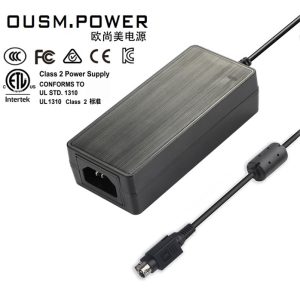Get your CIMA P1 Management Accounting exam preparation started today!

Introduction
The CIMA Operational P1 Management Accounting Exam is one of the most important exams you will take in your career. This exam will certify that you have the knowledge and skills necessary to manage and account for a company’s financial performance. The pass rate for this exam is typically around 50%, so it is important to start your preparation today.
Preparation Method
The best way to prepare for the CIMA Operational P1 Management Accounting Exam is by using a study guide. A good study guide will cover all of the topics on the exam and include practice questions to help you prepare. Another great way to prepare is by taking online courses or attending live workshops. These courses will provide you with in-depth information on all topics covered in the exam.
If you are looking for a more affordable option, consider using flashcards. Flashcards are a great way to memorize key concepts and formulas. Finally, be sure to practice plenty of mock exams. Mock exams will give you an idea of what type of questions are likely to be asked on the real exam and help improve your test-taking skills. Start preparing today, and you can be sure to pass the CIMA Operational P1 Management Accounting!
Study Guide
The CIMA P1 Management Accounting Study Guide is the perfect resource for anyone looking to pass the CIMA P1 exam. So, the guide covers all of the topics you will need to know to succeed on the exam, including financial accounting, management accounting, and cost control. It also includes practice questions and answers to help you prepare for the exam.
Practice test
CIMA Management Accounting PDF is an important module for accountants. So, the practice test will help you assess your current level of understanding and give you an idea of the type of questions that will be asked in the exam.
CIMA P1 Management Accounting PDF Questions
The CIMA P1 Management Accounting study guide is a comprehensive resource that covers all the topics in the exam. So, the guide includes practice questions and detailed explanations to help you understand the concepts. It also includes a section on tips and tricks to help you score high in the exam.

Prepare and analyze budgets.
Budgeting is a critical component of operations management. Forecasting future revenues and expenses and then allocating resources accordingly is essential for any organization wishing to maintain a strong competitive edge. So, this course will teach you how to prepare and analyze budgets to improve decision-making and optimize organizational performance.
Control and assess the performance
Management accountants need to be able to control and assess the performance of their organizations. To do this, they need to understand the organization’s financial results and how these are affected by operational decisions. So, they also need to use this information to advise on strategic options and provide accurate forecasts.
Evaluate investment proposals
When faced with investment proposals, a business must carefully weigh the risks and rewards of each option. The goal is to find the proposal that offers the greatest potential return while minimizing risk. S to make an informed decision, management must first understand the basics of capital budgeting.
Capital budgeting is the process of assessing proposed investments and determining whether they are worth making. Businesses use various methods such as net present value (NPV), internal rate of return (IRR), and payback period. These metrics help managers compare different investments and decide which offers the best return on investment (ROI).
Understand costing methods
A range of costing methods can be used in management accounting. So, these include absorption costing, marginal costing, and Activity-Based Costing. It is important to understand the differences between these methods and when each should be used.
Absorption costing is the most traditional form of costing and is based on the principle of full absorption. Under this method, all manufacturing costs are allocate to products, including fixed costs such as rent and depreciation. It results in a product’s unit cost being based on its total manufacturing costs rather than its marginal costs.
Boost your business skills with CIMA P1 Management Accounting!
The CIMA Operational P1 Management Accounting qualification is a great way to boost your business skills and knowledge. So, the course will teach you everything you need to know about financial planning, costing, and budgeting, as well as performance measurement and analysis. With this qualification under your belt, you’ll be able to take your business career to the next level!
Learn how to measure financial performance and make sound decisions for your business
Whether small or large, every business needs to be aware of its financial performance. This course will give you the skills and knowledge required to measure a company’s financial position and performance, as well as make sound strategic decisions for your business. So, you will learn about financial statement analysis, ratios, cash flow forecasting, and budgeting. Upon completion of this course, you will effectively manage a company’s finances and contribute to its success.
Identify key financial indicators and improve your decision-making ability today!
One of the key benefits of studying CIMA Operational P1 Management Accounting is developing an understanding of financial indicators and improving your decision-making ability. So, this article explores some of the most important financial indicators and how you can use them to make sound business decisions.
One key financial indicator is the return on assets (ROA). This measures how effectively a company is using its assets to generate profits. So, it is calculate by dividing net income by total assets. Another important indicator is the return on equity (ROE), which measures how much profit a company generates with shareholders’ money. It is calculate by dividing net income by shareholders’ equity.
Study CIMA P1 Management Accounting and learn how to save your business money.
The course offers an in-depth exploration of management accounting and how it can be used to improve business performance. It covers cost analysis, budgeting and forecasting, performance measurement, and decision making. So, you will learn how to assess a company’s financial position, measure its financial performance, and make sound strategic decisions based on that information.
Get ahead of the competition with CIMA P1 Management Accounting!
Prepares learners for a career in management accounting by providing an in-depth understanding of the concepts and practices used in business decision-making. So, by exploring performance measurement, costing and pricing, budgeting, financial analysis and interpretation, and risk management, CIMA Operational P1 Management Accounting equips learners with the skills they need to make sound strategic decisions that will give their businesses a competitive edge.







